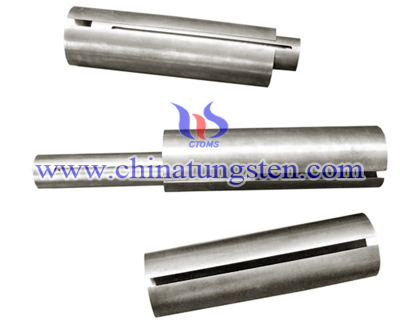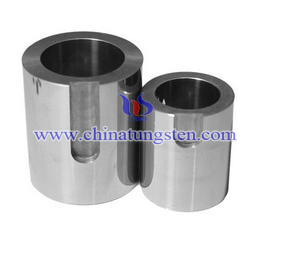Tungsten Alloy Radiation Shielding Materials Application in γ-raysⅠ
- Details
- Category: Tungsten Information
- Published on Thursday, 17 December 2015 18:05
- Written by yaqing
- Hits: 264
| Tungsten Alloy Supplier: Chinatungsten Online www.tungsten-alloy.com | Tel.: 86 592 5129696; Fax: 86 592 5129797;Email:sales@chinatungsten.com |
| Tungsten News & Prices, 3G Version: http://3g.chinatungsten.com | Molybdenum News & Molybdenum Price: http://news.molybdenum.com.cn |
Blue Tungsten Oxide Preparation out of Ammonium Paratungstate Self-Reduction
- Details
- Category: Tungsten Information
- Published on Thursday, 17 December 2015 17:50
- Written by xinyi
- Hits: 292
| Tungsten Supplier: Chinatungsten Online www.chinatungsten.com | Tel.: 86 592 5129696; Fax: 86 592 5129797;Email:sales@chinatungsten.com |
| Tungsten News & Prices, 3G Version: http://3g.chinatungsten.com | Molybdenum News & Molybdenum Price: http://news.molybdenum.com.cn |
Radioactive Source Species With Tungsten Alloy Radiation Shielding Materials
- Details
- Category: Tungsten Information
- Published on Thursday, 17 December 2015 17:09
- Written by yaqing
- Hits: 254

| Tungsten Alloy Supplier: Chinatungsten Online www.tungsten-alloy.com | Tel.: 86 592 5129696; Fax: 86 592 5129797;Email:sales@chinatungsten.com |
| Tungsten News & Prices, 3G Version: http://3g.chinatungsten.com | Molybdenum News & Molybdenum Price: http://news.molybdenum.com.cn |
Ammonium Paratungstate Detinning Processes
- Details
- Category: Tungsten Information
- Published on Thursday, 17 December 2015 17:24
- Written by xinyi
- Hits: 250
Various detinning processes of ammonium paratungstate mainly focus on removing tin acid radical(SnO32-) in sodium tungstate solution. It is depends on the characteristics of tungsten concentrates our country use currently. Tin impurities of tungsten concentrates mainly occurs as SnO2, tin mainly occurs as tin acid radical in the alkali immersion from ore alkali decomposition :
SnO2 + 2OH -= SnO32- + H2O.
Currently, in the occasion that China's tungsten smelting uses high quality tungsten concentrates, since the content of tin impurities in the ore is not high (0.1% to 0.4%) and it’s a monomorphic form mainly as SnO2, the content of tin impurities in leaching solution is not too high. High-quality products APT can be produced if any of detinning processes is taken in tungsten smelting process. Of course, each tin process also has negative impacts, primarily the balance between detinning rate and tungsten loss rate. Although some processes have higher detinning rate, tungsten loss is still serious. In addition, each process has shortcomings such as complex process. Also,there’re great impacts on the production cycle, production cost and process route complexity since the addition of detinning process.
At the same time, it is worth noting that, with the increasing scarcity of high-quality tungsten concentrates available for the exploitation of resources to maintain the tin content and other impurities increasing, more and more complex forms, tungsten concentrate in tin Occurrence Sometimes no longer SnO2-based, but in the state of tin SnO2 and sulfide (Stannite Cu2FeSnS4; SnS2 tin sulfide, etc.) coexist. When alkali leaching by reaction:
3SnS2 + 6OH- = 2SnS32- + Sn (OH) 62-,
It’s found that thiosulfate tin ions (SnS32- ) appear in sodium tungstate solution while the content of tin acid radical increased . In the current production, thiosulfate tin ions are the main reason for excessive tin impurities in product APT. Therefore, the development direction of detinning process should focus on removing thiosulfate tin ion, taking into account not long tungsten smelting process, without reducing the tungsten recovery. This study is little domestic, overseas it has also not been reported. This author has conducted systematic research to study the existing ratio of tin thiosulfate solution acid radical relationship with the pH of the solution, thio tin acid radical removal methods, but only in the exploratory stage, but also we hope to have more metallurgy workers joined the ranks of this study.

| Tungsten Supplier: Chinatungsten Online www.chinatungsten.com | Tel.: 86 592 5129696; Fax: 86 592 5129797;Email:sales@chinatungsten.com |
| Tungsten News & Prices, 3G Version: http://3g.chinatungsten.com | Molybdenum News & Molybdenum Price: http://news.molybdenum.com.cn |
Tungsten Alloy Radioactive Source Container
- Details
- Category: Tungsten Information
- Published on Thursday, 17 December 2015 17:05
- Written by yaqing
- Hits: 227

| Tungsten Alloy Supplier: Chinatungsten Online www.tungsten-alloy.com | Tel.: 86 592 5129696; Fax: 86 592 5129797;Email:sales@chinatungsten.com |
| Tungsten News & Prices, 3G Version: http://3g.chinatungsten.com | Molybdenum News & Molybdenum Price: http://news.molybdenum.com.cn |





 sales@chinatungsten.com
sales@chinatungsten.com